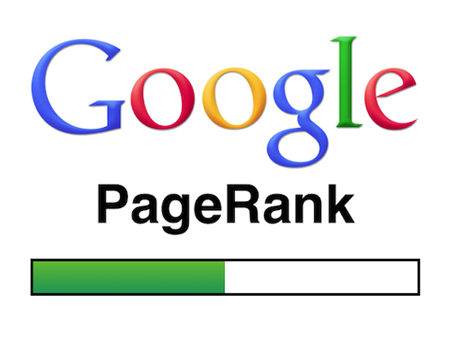What is a Domain? The Comprehensive Guide to Understanding Website Domains
In the vast digital landscape, domains play a foundational role in shaping the internet as we know it today. If you’ve ever wondered “What is a domain?”, you’re not alone. Domains are integral to website creation and the user experience, yet many individuals and businesses don’t fully understand their significance. This guide will demystify domains, explore their types, explain how they function, and offer insights on choosing the right domain for your website.
A domain name is more than just an address; it’s the gateway to your online presence, branding, and visibility. Let’s take a deeper dive into what a domain is and why it matters so much in the digital world.

Table of Contents
Understanding the Basics: What is a Domain?
At its core, a domain is a human-readable address used to identify a specific location on the internet. Instead of relying on long, complex IP addresses (which are a series of numbers and dots), domains provide a simple, memorable name that users can type into their browsers to access websites.
For example, the IP address for Google’s homepage might look something like “172.217.3.110,” but it’s far easier for people to remember “www.google.com.” The domain “google.com” directs you to the same place but with much more user-friendly navigation.
Each domain is unique, meaning no two websites can have the exact same domain name. Think of it like the address to your home—specific, personalized, and vital for others to reach you.
Components of a Domain Name
A domain name consists of two primary parts: the second-level domain (SLD) and the top-level domain (TLD).
- Second-Level Domain (SLD): This is the main part of the domain name and is what most users think of as the website’s name. In “google.com,” “google” is the second-level domain.
- Top-Level Domain (TLD): This is the extension that follows the SLD. In “google.com,” the “.com” is the TLD. There are hundreds of TLDs, with “.com” being the most popular. Other examples include “.org,” “.net,” and “.edu.”
Domains can also include subdomains, which appear before the second-level domain. For instance, “blog.google.com” might be used to represent Google’s blog. The “blog” in this case is a subdomain, helping to organize website sections without requiring an entirely new domain.
How Domains Work: DNS and IP Addresses
To truly understand “What is a domain,” it’s essential to learn how they function on a technical level. The Domain Name System (DNS) acts as the internet’s phonebook, converting the human-readable domain names we type into the IP addresses that computers use to identify servers.
Whenever you enter a domain name into a browser, DNS kicks into action by translating the domain into the correct IP address, directing your browser to the server where the website is hosted. Without this conversion process, users would be forced to memorize long strings of numbers—something that would make internet navigation much more difficult.
DNS Process Explained:
- A user enters “example.com” into their browser.
- The browser contacts a DNS resolver to find the IP address for “example.com.”
- The DNS resolver checks its cache or asks other DNS servers for the IP address.
- Once the correct IP is found, the browser connects to the web server hosting “example.com.”
In short, domains allow us to access websites easily without needing to worry about technical details like IP addresses.
Different Types of Domains: What You Need to Know
Understanding the different types of domains can help when you’re choosing a domain for your own website. Here’s a breakdown of the primary categories of domains:
Generic Top-Level Domains (gTLDs)
gTLDs are the most common type of domain extensions. The most recognizable examples include “.com,” “.org,” and “.net.” They are not restricted by geographical location or the type of website, making them a popular choice for businesses, organizations, and individuals alike.
- .com: Stands for “commercial” and is the most widely used TLD, typically for business and personal websites.
- .org: Usually associated with non-profit organizations but can be used by anyone.
- .net: Originally intended for network-related businesses, but its use has expanded.
Country Code Top-Level Domains (ccTLDs)
These domains are tied to specific countries or territories. Examples include “.uk” for the United Kingdom, “.de” for Germany, and “.jp” for Japan. ccTLDs are a great choice for businesses or individuals with a local audience.
- .us: For the United States.
- .ca: For Canada.
- .au: For Australia.
Some ccTLDs are more flexible and have been adopted globally for creative purposes. For example, “.io” (assigned to the British Indian Ocean Territory) has become popular with tech companies.
Sponsored Top-Level Domains (sTLDs)
These are specialized TLDs that are sponsored by specific industries, organizations, or communities. They are often restricted to certain groups or industries. Examples include:
- .edu: Reserved for educational institutions.
- .gov: Restricted to government entities in the United States.
- .mil: Used by the U.S. military.
New Generic Top-Level Domains (New gTLDs)
In recent years, hundreds of new TLDs have been introduced to offer more variety and flexibility in domain name choices. These include extensions like “.blog,” “.tech,” “.store,” and “.guru.” New gTLDs allow businesses and individuals to create more specific, branded domain names.
- .tech: Ideal for technology-related businesses and websites.
- .shop: Great for e-commerce websites.
- .blog: Perfect for bloggers and content creators.
Why Domains Are Crucial for Your Online Presence
Domains are a key component of your online identity. They serve as the first impression for your website and help users find you more easily on the web. Here are several reasons why choosing the right domain name is crucial:
1. Branding and Identity
Your domain name is the cornerstone of your brand’s online presence. A memorable, relevant domain can leave a lasting impression on visitors, helping them associate your website with your business or service. Think of major companies like Amazon, Apple, or Facebook—each has a simple, memorable domain that aligns with its brand.
2. Search Engine Optimization (SEO)
While domain names alone don’t guarantee SEO success, having a keyword-rich domain can contribute to better search engine rankings. For example, a local restaurant might benefit from including its location or cuisine type in the domain, such as “BestPizzaNYC.com.”
Moreover, domain names that are easy to type, pronounce, and recall can reduce bounce rates, which positively impacts SEO.
3. Credibility and Trust
A professional-looking domain lends credibility to your business. Users are more likely to trust websites with well-known or carefully chosen domain names, as opposed to spammy or confusing names. For instance, a “.com” domain might be perceived as more authoritative than less common extensions.
4. Control Over Your Brand
Owning your domain name gives you control over your online brand. It allows you to create personalized email addresses (e.g., info@yourbrand.com) and ensures that no other entity can infringe on your brand by registering the same or a similar domain.
How to Choose the Perfect Domain Name
Selecting the right domain name is a critical decision for any website or business. Here are some practical tips to help you make the best choice:
1. Keep it Short and Simple
The best domain names are concise and easy to spell. Long or complicated names can lead to typos and make it harder for users to remember.
2. Use Keywords Wisely
Incorporating relevant keywords into your domain can give you a slight edge in search rankings and help users understand what your website is about. However, avoid stuffing your domain with too many keywords, as this can make it look spammy.
3. Avoid Numbers and Hyphens
While you might be tempted to use numbers or hyphens if your desired domain is taken, these additions can cause confusion. Users may forget to include them or mistype your domain, leading to lost traffic.
4. Choose the Right Extension
While “.com” remains the most popular TLD, there are many other options available. Choose an extension that aligns with your brand or industry. For example, if you’re running a tech startup, “.io” could be a good fit.
The Domain Registration Process Explained
Registering a domain is a straightforward process, but it requires careful planning. Here’s a step-by-step guide to domain registration:
1. Choose a Registrar
A domain registrar is a company authorized to register and manage domain names. Popular registrars include GoDaddy, Namecheap, and Google Domains.
2. Search for Available Domains
Using the registrar’s search tool, check the availability of your desired
domain name. If your first choice is taken, consider alternatives or variations.
3. Select Your TLD
Choose a top-level domain that fits your needs. Most registrars will show you available options, including .com, .net, .org, and many of the newer gTLDs.
4. Register Your Domain
Once you’ve chosen your domain name and extension, you’ll need to provide your contact information and select the registration length (typically 1-10 years). Some registrars offer domain privacy protection, which hides your personal information from the public WHOIS database.
5. Connect Your Domain to a Website
After registration, you’ll need to connect your domain to your website by updating your DNS settings. If you’ve purchased hosting through the same company, this process is often done automatically.
What Happens When a Domain Expires?
Domain names aren’t purchased forever—they are leased for a certain period (usually 1-10 years). If you fail to renew your domain before it expires, it may become available for others to register, potentially causing you to lose your online identity or brand.
Most registrars offer a grace period after a domain expires, during which the original owner can still renew it. After this grace period, the domain may enter an auction or become available for public registration.
The Future of Domain Names: Trends to Watch
The domain landscape is constantly evolving, with new trends shaping the future of online branding. Here are a few trends to keep an eye on:
- Voice Search Optimization: As more users rely on voice search through devices like Siri and Alexa, domain names that are easy to pronounce and remember will become even more valuable.
- New TLDs: The growing number of specialized TLDs gives businesses more creative options when choosing domain names. In the future, we may see even more diversification in domain extensions.
- Increased Cybersecurity Measures: As online privacy concerns grow, domain registrars may offer enhanced security features, such as stricter verification processes and improved protection against domain hijacking.
FAQs
What is the difference between a domain and hosting?
A domain is an address where users access your website while hosting refers to the server space where your website files are stored. You need both to have a functional website.
Can I transfer my domain to another registrar?
Yes, most registrars allow domain transfers, but you may need to wait 60 days after the initial registration or previous transfer to do so.
Do I own a domain forever?
No, domains are registered for a specific period (usually 1-10 years), after which they must be renewed.
What happens if someone registers a domain with my business name?
You may be able to pursue legal action through trademark claims if someone is using your business name maliciously or deceptively. It’s important to register your domain early to prevent this issue.
Can I register a domain for free?
Some hosting providers offer free domain registration as part of their services, but standalone domain registration typically comes with a fee.
How do subdomains work?
Subdomains are extensions of your primary domain. They help organize your website into sections. For example, “blog.yoursite.com” could be a subdomain dedicated to your blog.
Conclusion
Understanding “What is a domain” is fundamental to building and maintaining an online presence. From brand identity to search engine rankings, the right domain name is a powerful tool that can set your website apart from the competition. By choosing a memorable, relevant, and appropriate domain, you pave the way for success in the digital world.






